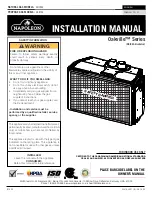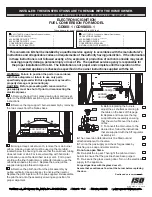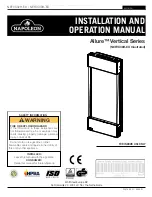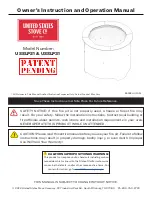
Page 36
Installation and Operation Manual - Inspire 2000
The top of the flue system should be tall enough to be above the air turbulence caused when wind
blows against the house and its roof.
The flue exit shall be located outside the building in which the appliance is installed so that:
- The flue pipe shall extend not less than 4.6 m above the top of the floor protector;
- The minimum height of the flue system within 3 m distance from the highest point of the roof
shall be 600 mm above that point;
- The minimum height of the flue system further than 3 m from the highest point of the roof shall
be 1000 mm above roof penetration;
- No part of any building lies in or above a circular area described by a horizontal radius of 3 m
about the flue system exit.
9.4 The Relationship Between the Chimney and the House
Because the venting system is the engine that drives the wood heating system, it must have
the right characteristics. The signs of bad system design are cold backdrafting when there is
no fire in the wood fire, slow kindling of new fires, and smoke roll-out when the door is opened
for loading. There are two guidelines to follow. First, the chimney should be installed up through
the heated space of the house, not out and up an outside wall. Second, the chimney should
penetrate to the top of the building at or near the highest heated space.
9.4.1 Why Inside Chimneys Are Preferred
Venting systems that rise straight up from the wood fire flue collar provide the best performance.
Chimneys that rise inside the warm space of the house tend to provide a small amount of draft
even when there is no fire burning. This means that when a fire is lit, the smoke goes up the
chimney and strong draft build quickly as the chimney flue warms up. Although they are common
in North America, chimneys that exit a house wall and run up outside can cause problems.
Figure 33: Good System Design
Figure 34: Inferior System Design













































